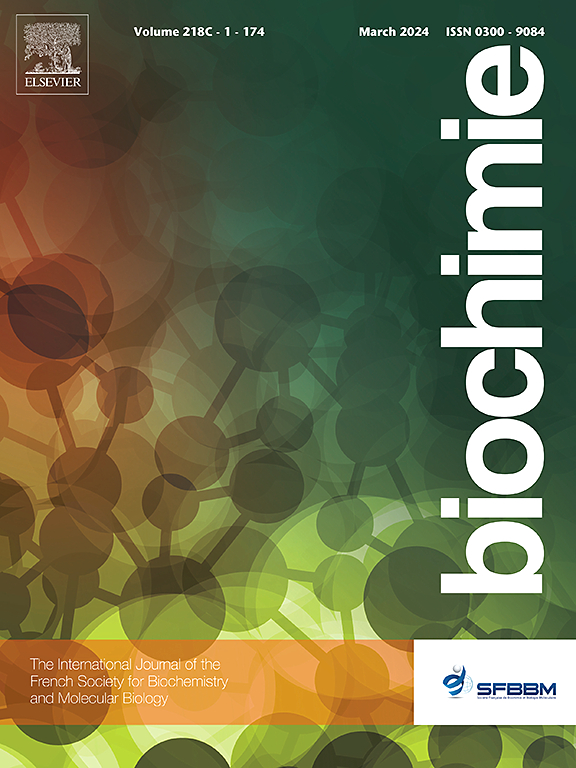The pentose phosphate pathway (PPP) in the glioma metabolism: A potent enhancer of malignancy
IF 3
3区 生物学
Q2 BIOCHEMISTRY & MOLECULAR BIOLOGY
引用次数: 0
Abstract
The glioma hallmark includes reprogramming metabolism to support biosynthetic and bioenergetic demands, as well as to maintain their redox equilibrium. It has been suggested that the pentose phosphate pathway (PPP) and glycolysis are directly involved in the dynamics and regulation of glioma cell proliferation and migration. The PPP is implicated in cellular redox homeostasis and the modulation of signaling pathways, which play a fundamental role in the progression of tumors to malignant grades, metastasis, and drug resistance. Several studies have shown that in glioblastoma cells, the activity, expression, and metabolic flux of some PPP enzymes increase, leading to heightened activity of the pathway. This generates higher levels of DNA, lipids, cholesterol, and amino acids, favoring rapid cell proliferation. Due to the crucial role played by the PPP in the development of glioma cells, enzymes from this pathway have been proposed as potential therapeutic targets. This review summarizes and highlights the role that the PPP plays in glioma cells and focuses on the key functions of the enzymes and metabolites generated by this pathway, as well as the regulation of the PPP. The studies described in this article enrich the understanding of the PPP as a therapeutic tool in the search for pharmacological targets for the development of a new generation of drugs to treat glioma.

胶质瘤代谢中的戊糖磷酸途径(PPP):恶性肿瘤的有力增强剂。
胶质瘤的特征包括重编程代谢以支持生物合成和生物能量需求,以及维持它们的氧化还原平衡。戊糖磷酸途径(PPP)和糖酵解直接参与胶质瘤细胞增殖和迁移的动力学和调控。PPP与细胞氧化还原稳态和信号通路调节有关,在肿瘤向恶性发展、转移和耐药过程中起着重要作用。一些研究表明,在胶质母细胞瘤细胞中,一些PPP酶的活性、表达和代谢通量增加,导致该途径的活性升高。这会产生更高水平的DNA、脂质、胆固醇和氨基酸,有利于细胞的快速增殖。由于PPP在胶质瘤细胞的发育中起着至关重要的作用,来自该途径的酶被认为是潜在的治疗靶点。本文综述并强调了PPP在胶质瘤细胞中的作用,重点介绍了该通路产生的酶和代谢物的关键功能,以及PPP的调控。本文中所描述的研究丰富了人们对PPP作为一种治疗工具的理解,这种治疗工具可以为开发新一代治疗胶质瘤的药物寻找药理靶点。
本文章由计算机程序翻译,如有差异,请以英文原文为准。
求助全文
约1分钟内获得全文
求助全文
来源期刊

Biochimie
生物-生化与分子生物学
CiteScore
7.20
自引率
2.60%
发文量
219
审稿时长
40 days
期刊介绍:
Biochimie publishes original research articles, short communications, review articles, graphical reviews, mini-reviews, and hypotheses in the broad areas of biology, including biochemistry, enzymology, molecular and cell biology, metabolic regulation, genetics, immunology, microbiology, structural biology, genomics, proteomics, and molecular mechanisms of disease. Biochimie publishes exclusively in English.
Articles are subject to peer review, and must satisfy the requirements of originality, high scientific integrity and general interest to a broad range of readers. Submissions that are judged to be of sound scientific and technical quality but do not fully satisfy the requirements for publication in Biochimie may benefit from a transfer service to a more suitable journal within the same subject area.
 求助内容:
求助内容: 应助结果提醒方式:
应助结果提醒方式:


